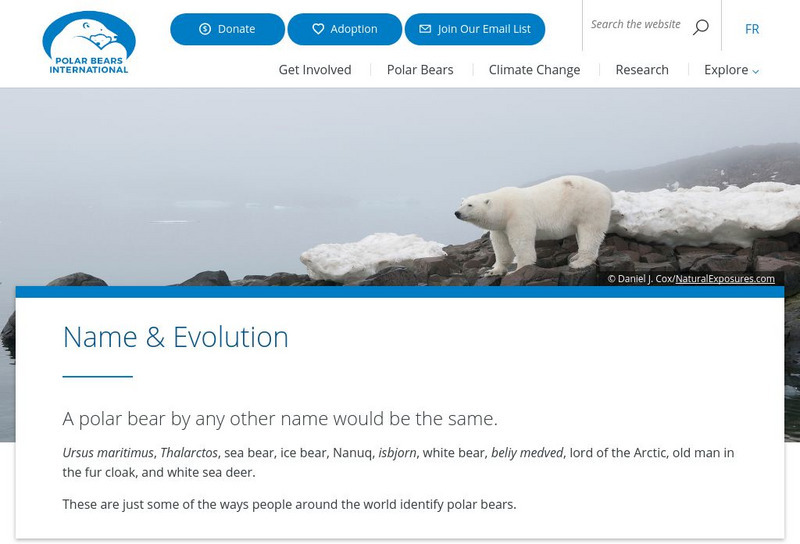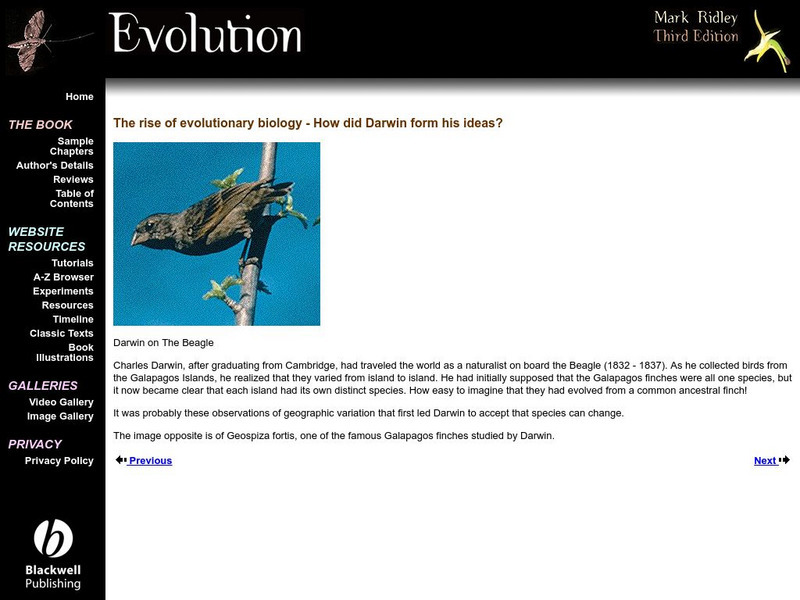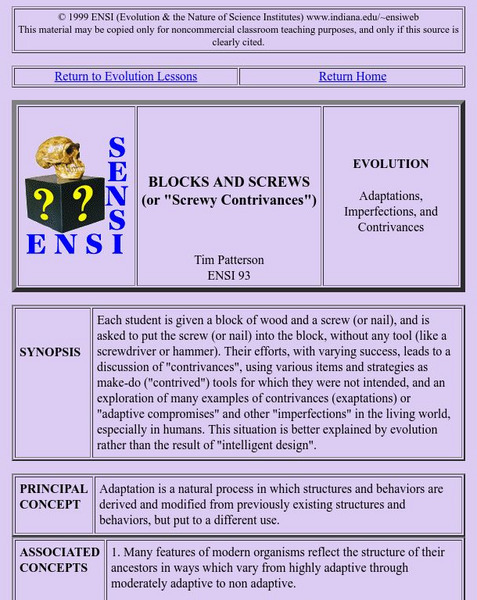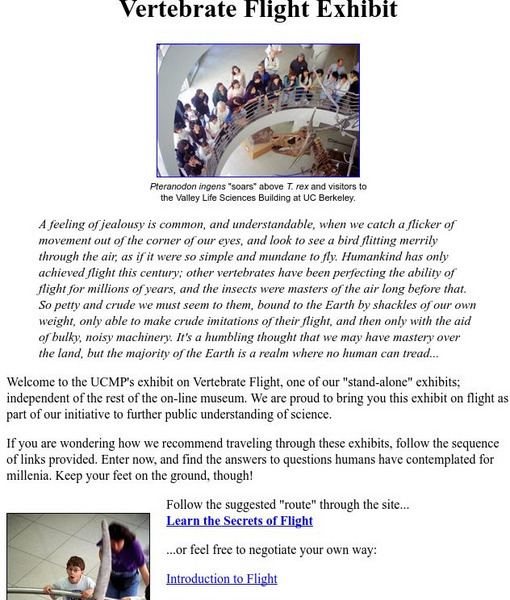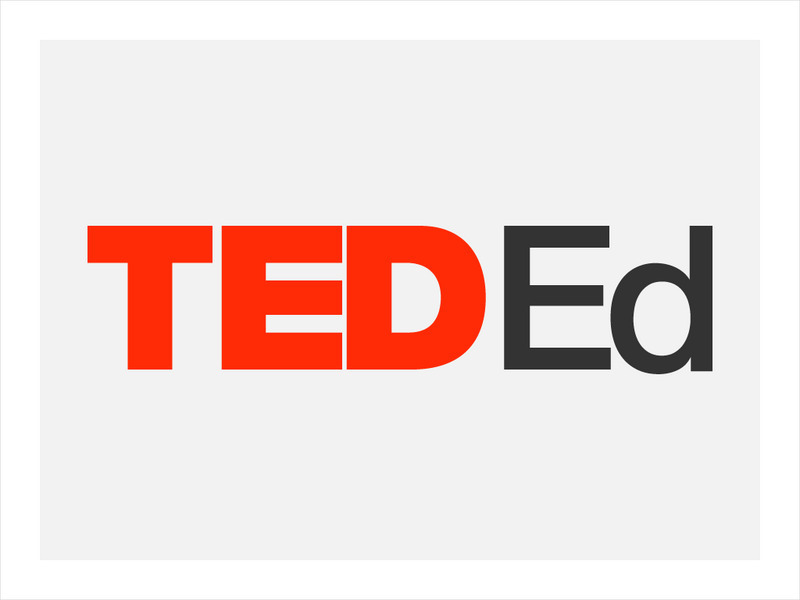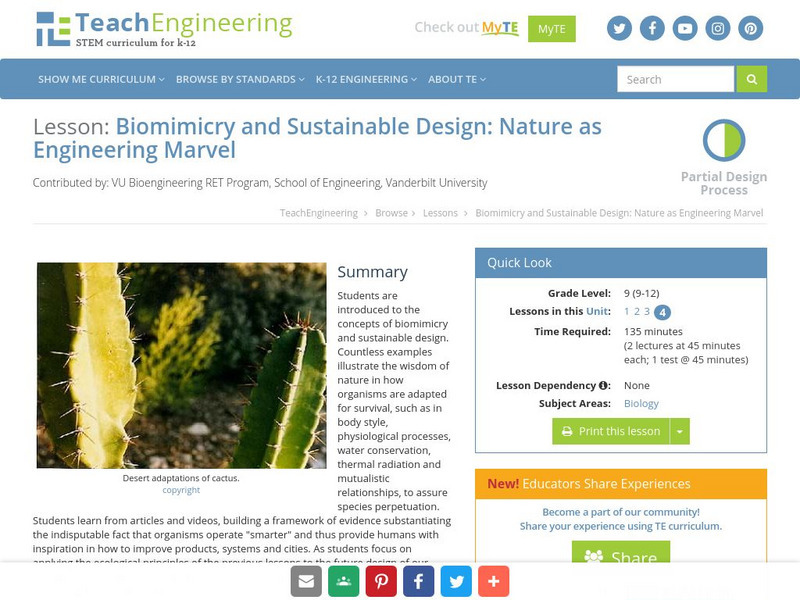PBS
Pbs: Biogeography Polar Bears and Penguins
From the Evidence for Evolution Library at PBS, this is a short article about biogeography. The distribution of animals is one source of evidence for Darwin's descent with modification.
Other
Polar Bears International: The Bear Facts
This site from Polar Bears International, dedicated to the worldwide conservation of the polar bear and its arctic habitat, provides extensive information about the polar bear. Content includes polar bear I.Q., hibernation facts,...
Other
The Rise of Evolutionary Biology: Darwin's Ideas
These pages are part of a site called "Evolution," that accompany a textbook by the same name. Mark Ridley is the author. This section is about Darwin, his travels, and his observations that led to "On The Origins Of Species."
Indiana University
Ensi: Blocks and Screws Lesson Plan
The Evolution and the Nature of Science Institute offers lesson plans that investigate the vestigial organs in such a way as to better explain their imperfections as proof of evolution rather than the result of "intelligent design."
University of California
Ucmp: Entrance to the Vertebrate Flight Exhibit
This University of California Berkeley page provides information on the evolution of vertebrate flight and includes links to the following topics: Introduction to Flight, The Physics of Flight, Gliders and Parachuters, The Evolution of...
Vision Learning
Visionlearning: Biology: Charles Darwin I: The Origin of Species
Instructional module focusing on the early work of Charles Darwin. Discusses Darwin's key role in supporting and describing the theory of evolution as driven by natural selection. Site also includes an interactive practice quiz and links...
TED Talks
Ted: Ted Ed: The Evolution of Animal Genitalia
Genitals are the fastest-evolving organs in the animal kingdom. Menno Schilthuizen explains how the evolutionary biology of nature's nether regions uncovers a hidden world of seduction, conflict, and rivalry.
BioMan Biology
Bio Man Biology: Snurfle Islands
Create a Snurfle and see whether it can survive in different environments. As you play the game, you will learn about natural selection and animal adaptations. At the end of the game, try the multiple-choice quiz to check your...
Other
The Rise of Evolutionary Biology: Biology Before Darwin
These pages are part of a site called "Evolution," that accompanies a textbook by the same name. Mark Ridley is the author. Here he discusses theories for species change that were before Darwin published "On the Origin of Species."
CK-12 Foundation
Ck 12: Life Science: 4.3 Natural Selection
Explore the theory of evolution by means of natural selection.
TeachEngineering
Teach Engineering: The Benefits of Biodiversity
First, students toss coins to determine what traits a set of mouse parents possess, such as fur color, body size, heat tolerance, and running speed. Next they use coin tossing to determine the traits a mouse pup born to these parents...
Huntington Library
Huntington Library: Garden Lesson Plans: Rooting Into the Soil [Pdf]
An experiment to investigate the capacity of different soils to retain water, and how this impacts on the survival, evolution, and adaptations of plants. Extension activities are included.
TED Talks
Ted: Ted Ed: Evolution's Gift of Play, From Bonobo Apes to Humans
Learn about our similarity to apes, and how they solve their problems so peacefully at times but humans, the more "advanced" species, can behave so primitively. [7:02]
BiologyWise
Biology Wise: The 7 Unmistakable Characteristics of Life
Describes the seven characteristics that define life - cells, homeostasis, heredity, use of energy, reproduction, response to environmental stimuli, and evolution and adaptation.
TeachEngineering
Teach Engineering: Nature Is an Engineering Marvel
This lesson introduces learners to the concepts of biomicry and sustainable design. Students will learn to illustrate the wisdom of nature by demonstratiing how organisms adapt to their environment.
BBC
Bbc Schools: Ks2 Bitesize: Science: The Living World
This landing page includes learning modules on the following topics of: animals, plants, microorganisms, life cycles and reproductions, food chains, habits, humans and the environment, adaptation, inheritance, and evolution.
PBS
Pbs Learning Media: Convergence: Marsupials and Placentals
This graphic illustrates some of the marsupial mammals in Australia and placental mammals in North America. Even though they are not closely related, these mammals look alike because they have adapted to similar ecological roles. From...
Vision Learning
Visionlearning: Biology: Galapagos Finches
Interactive animation illustrates how Charles Darwin used his study of finch beaks to explain evolution. A phylogenetic tree diagram shows how the birds' color and beak shape changed over generations.
PBS
Pbs Learning Media: American Chestnut Tree
This annotated slideshow adapted from KET's Electronic Field Trip to the Forest illustrates how blight decimated the American chestnut tree and the methods scientists use to identify and pollinate the remaining trees to create...
OneWorld UK
One World: Stop Life in Danger
Elementary students will appreciate the cartoon style fact clips as the evolution of life on earth is laid out. Diversity, survival of the fittest, and ideas to help the environment are all included. An entertaining site for younger...
John F. Kennedy Center
The Kennedy Center: Musical Harlem
The Kennedy Center's ArtsEdge offers a great unit for introducing jazz to students. Its use of Harlem as the "glue" which binds together elements such as jazz history and jazz terminology, makes it particularly effective for the...
Other
I Scoop: Digital Transformation: Online Guide to Digital Business Transformation
Digital transformation is the cultural, organizational and operational change of an organization, industry or ecosystem through a smart integration of digital technologies, processes and competencies across all levels and functions in a...
Smithsonian Institution
Smithsonian Science Education Center: Natural Selection: Common Misconceptions
This video explores the misconceptions that students hold about natural selection. Go inside your student's heads to see what they are thinking during a lesson on evolution. Follow these suggestions for addressing these common...
Concord Consortium
Concord Consortium: Stem Resources: Natural Selection
Build a dam in the middle of an ecosystem and observe how the population of plants and animals adapt to their new environment with this science simulation. Learn how the populations adapt to survive in their new habitat. Then remove the...



